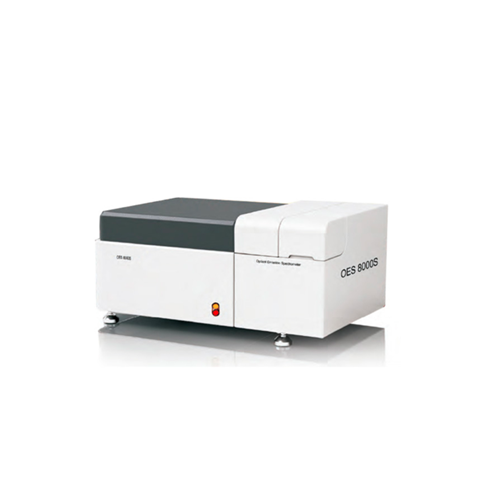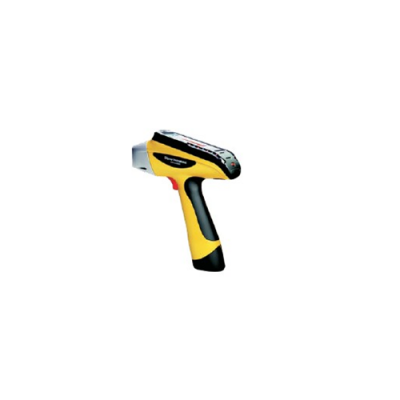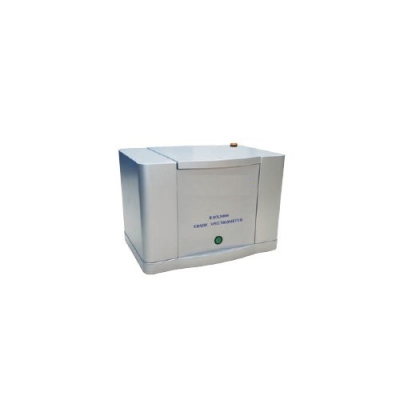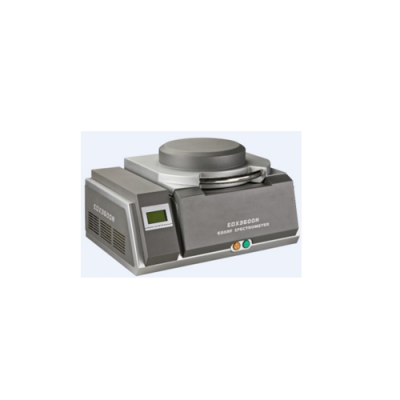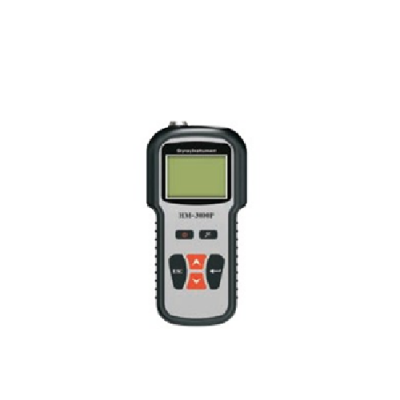Direct-reading Optical Emission Spectrometer
Direct-reading Optical Emission Spectrometer
Description
Based on the Multi-CCD detector and total spectrum technology, Optical Emission Spectrometer OES 8000S detect all the spectral lines within the range of wavelength; so it is extremely easy to install and add the matrix, channels and analytical program. With a compact size, it is easy to maintain and locate in the laboratory. OES 8000S is a good choice of the complex analysis for ferrous and nonferrous metals in one instrument.
Performance advantages
1.Thanks to the Multi-CCD detector and total spectrum technology, it is easier to install and add the matrix, channels and analytical program in Sky-ray or customers' laboratory.
2.Require smaller space for laboratory because of the compact size.
3.Work for 24/7 to serve your business with high stability and reliability.
4.Fast way to analyze and demonstrate the results within 30 seconds.
5.The operation and maintenance are simple and convenient for operators.
6.All of the typical analytical programs are calibrated in Sky-ray, which are more accurate and test more types of metal grades.
7.Easy to calibrate the instrument with the standardization samples.
8.Without chemical reagents, the analysis process is safe and ecofriendly.

Application fields
The element analysis for metal materials is a traditional work for the research and development, quality control, process control and other related works in the field of the metal smelting, casting and processing industry.
U-THERM Optical Emission Spectrometer is widely used in the element analysis of ferrous and non-ferrous metal. The instrument can simultaneously analyze dozens of elements with a fast, accurate and stable performance, meeting the requirements in industrial development, process control, incoming inspection, product sorting, etc.
U-THERM Optical Emission Spectrometer provides a convenient, eco-friendly and low-cost solution for metal analysis, making the R&D, production process and product quality more controllable, helping users upgrade the level of technology and quality; while accelerating the relevant procedures and creating economic and environmental benefits for users. Optical Emission Spectrometer has been a typical device to evaluate the level of technology and product quality for a factory.
Technical Specifications
Light chamber design
Pasing Longge structure with diameter of Roland circle being 400mm
Wavelength range 134-680nm
Pixel resolution 1 Opm
Constant temperature 32.5士0.5°C
Special materials to ensure that the light
chamber deforms to minimum
Concave Grating
Engraved line density 24001/mm
Primary spectral line dispersion rate:1.04nm/mm
Software
Polynomial correction method to calculate the concentration ratio
Matrix correction
lntensity standardized correction
Material grade type re-calibration
Automatic correction of the interference
between the spectral lines of the elements
Recognition of grade library
One-key position correction
One-key printing function
The test results are output in different
formats
National Standard Sample Library
Excitation light source
High energy plasma spark light source technology
High-energy pre-sparking technology (HEPS)
Frequency 100-1 OOOHz
Excitation Platform
3mm analysis spacing on sample platform
Spray electrode technique
Dimension
Height 435mm, length 900mm, width 600mm
120 kg
Power
Maximum power 1500 W
Standby power 70 W
Detector
High-pe「formance linear array CMOS
Analysis time
30 seconds or less, depending on sample type
Typical results
Low alloy steel GBW1398
Elements | C | Si | Mn | P | S | Cr | Ni | Mo | Cu |
Reference Value | 0.499 | 2.140 | 0.798 | 0.029 | 0.021 | 0.974 | 1.970 | 0.830 | 0.303 |
Results | 0.491 | 2.168 | 0.818 | 0.027 | 0.019 | 0.953 | 1.939 | 0.820 | 0.291 |
Elements | V | Ti | AI | Nb | W | B | Co | Zr | |
Reference Value | 0.469 | 0.082 | 0.027 | 0.124 | 1.530 | 0.0047 | 0.238 | 0.051 | |
Results | 0.475 | 0.083 | 0.025 | 0.127 | 1.501 | 0.004 | 0.230 | 0.055 |
Stainless steel YSB S 11378a-2008
Elements | C | Si | Mn | P | S | Cr | Ni | Mo | Cu |
Reference Value | 0.066 | 0.760 | 1.160 | 0.030 | 0.0091 | 17.490 | 8.230 | 0.205 | 0.355 |
Results | 0.066 | 0.790 | 1.180 | 0.027 | 0.007 | 17.573 | 8.173 | 0.189 | 0.344 |
Elements | V | Ti | AI | Nb | W | Co | |||
Reference Value | 0.061 | 0.006 | 0.014 | 0.011 | 0.021 | 0.099 | |||
Results | 0.059 | 0.007 | 0.018 | 0.010 | 0.029 | 0.094 |
INQUIRY
CATEGORIES
- Coal Testing
- Petroleum Testing
- Muffle Furnace
- Highway Instruments
- Direct Reading Spectrometer
- Abbe & Auto Refractometer
- Agricultural Instruments
- Autoclave/Sterilizer
- Weighting Balance & Scales
- Safety Cabinet & Clean Bench
- Carbon & Sulfur Analyzer
- Centrifuge
- Clinical Instruments
- Colorimeter & Color Light Box
- Dehumidifier & Humidifier
- Electrolyte Analyzer
- Electrophoresis Cell
- Freeze Dryer
- Gas Generator
- Gene Test
- Heating & Drying Oven
- Pathology Instruments
- Ice Maker
- ICP Spectrometers
- Incubators
- Infrared Thermometer
- Freezer & Refrigeration Products
- Liquid Nitrogen Container
- Biological Microscope
- Microwave Digestion & Extraction
- Mixer & Homogenizer
- Mixer & Shaker
- Moisture Analyzer
- Moisture Tester
- Oil-in-Water Analyzer
- Pack & Paper Testing
- Automotive teaching model
- Particle Counter
- Plastic Testing
- Particle Size Analyzer
- Polarimeter & Saccharimeter
- Rotary Evaporator
- Sampling Instruments
- Small Instruments
- Spectrophotometer
- Water Purifier
- Water quality detector
- XRF
- Water Testing
- AUTOMATIC TITRATORS
- Thermal Analysis
- Automatic Kjeldahl Analyzer
- TOC Analyzer
- Universal Testing Machine
- Price List of Reagents
- Fluorescence Spectrometer
- NIR Spectrophotometer
LATEST NEWS
CONTACT US
Contact: Harry
Phone: 00852-82283663
E-mail: info@lab-kits.com
Add: ROOM 1, 16F, EMPRESS PLAZA, 17-19 CHATHAM ROAD, TSIM SHA TSUI, KOWLOON, HONG KONG
